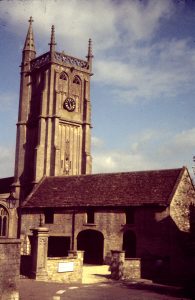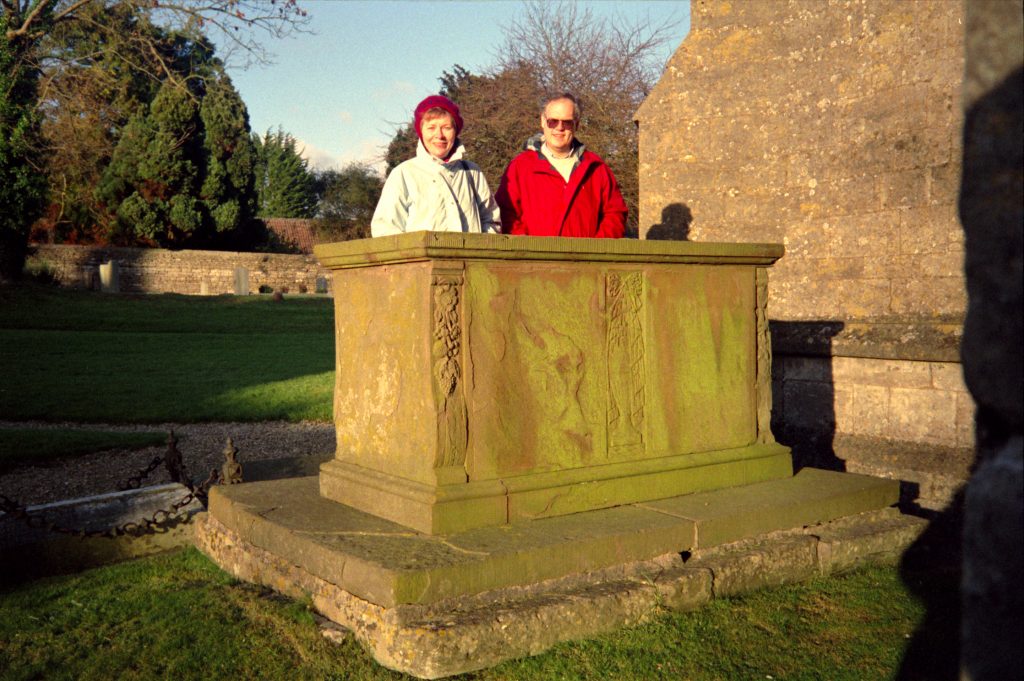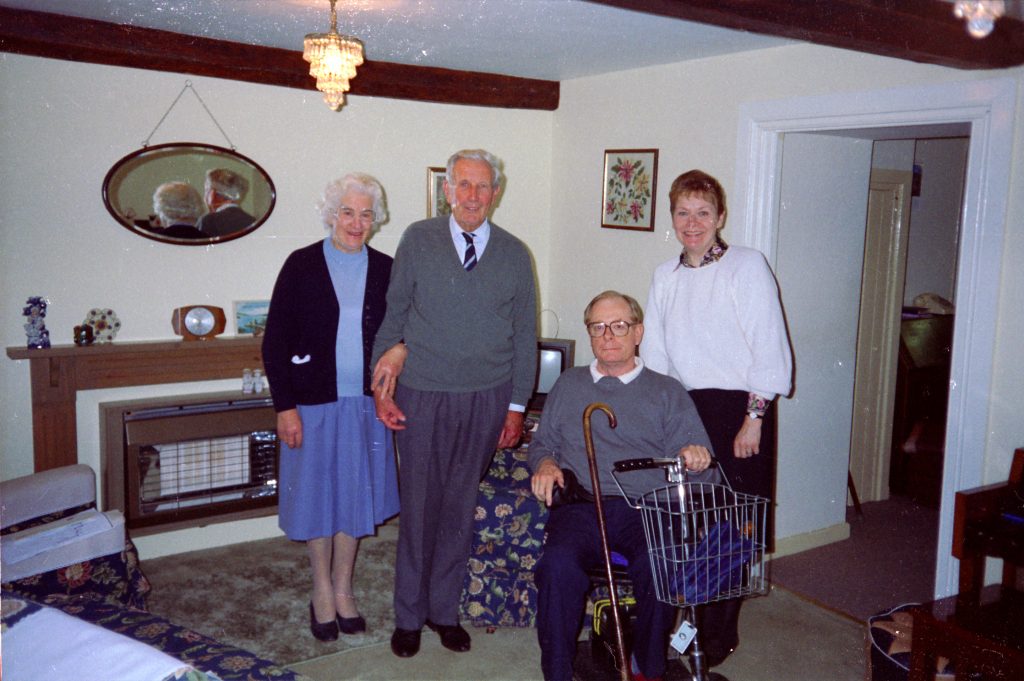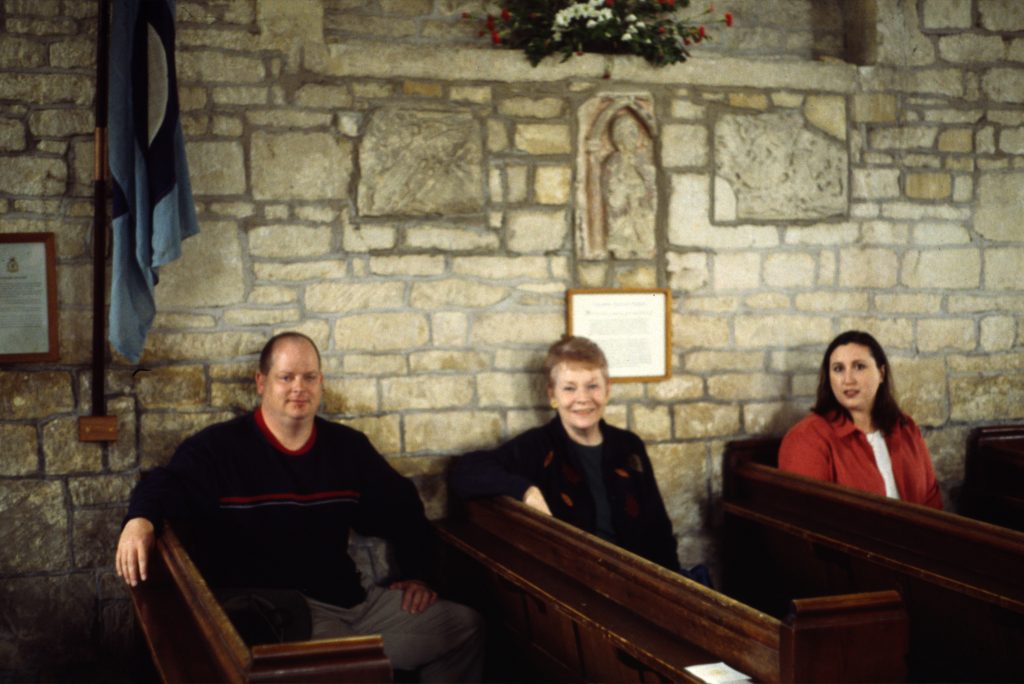Recently, I have been discussing various medieval topics found in specific books in my West Country Medieval Mystery Series which features my heroine, the Lady Apollonia of Aust. This month, I want to talk about my selection of Colerne Leat as the place where Lady Apollonia lived with her first husband, Geoffrey Montecute.
Colerne Leat is a fictional name I introduced in Effigy of the Cloven Hoof while Colerne is a real village in Wiltshire very near and dear to my heart. Starting with my great-grandfather Aust and going back many generations, my Aust ancestors resided in Colerne. Some of these ancestors worked on the nearby Box Tunnel, built in 1841, by which the Great Western Railway from London was connected with Bath, just eight miles to the west. The Austs were so numerous in Colerne at one time that a section of the village was once called Aust End.
When I visited Colerne in 1993, there was only one Aust family still living there. The picture below shows Henry Aust and his wife in their home hosting me with my brother, Jim Aust. Henry had the same name as Jim’s and my father. Henry’s wife had determined that we were eighth cousins.
The graveyard of the parish church has many tombs with the name of Aust, and many of these were still readable during my first visit to that graveyard in 1986. Sadly, acid rain and pollution have taken a toll on many of the stone letters in the intervening years, so most of the inscriptions are no longer legible. The picture at the top of this posting shows me with my American cousin Dennis Aust on a 1993 visit looking at a large weathered Aust tomb near the entrance to the parish church in Colerne.
This parish church goes back to Saxon times. The present building is over 900 years old although much of it was restored in the Victorian period. The picture above shows my son Charlie, and his wife, Shelly, sitting with me in front of the north wall displaying some stones from the previous 8th-9th century-Saxon church which was built on the same site.
 Colerne was a typical medieval village with its parish church, tithe barn, pub, and manor house. The picture on the left shows the medieval tithe barn next to the parish church. The village is older, however, with 28 families living there at the time of the Domesday Book in the late 11th century. In World War II, there was an RAF base next to Colerne, and excavations there have revealed a Roman Villa, so Colerne has an ancient history going back to the Roman occupation of Britain.
Colerne was a typical medieval village with its parish church, tithe barn, pub, and manor house. The picture on the left shows the medieval tithe barn next to the parish church. The village is older, however, with 28 families living there at the time of the Domesday Book in the late 11th century. In World War II, there was an RAF base next to Colerne, and excavations there have revealed a Roman Villa, so Colerne has an ancient history going back to the Roman occupation of Britain.
Also in Wiltshire is a famous estate called Longleat. “Leat” is a word common in the West Country of England to denote a watercourse dug to run a mill. These mill streams were extremely common at the time of my novels, so I decided to combine the word “leat” with Colerne to create fictional Colerne Leat, the location of the lands of the knight Geoffrey Montecute. My brother Jim, shown above, honored Longleat by calling his house “Shortleat” because of a sometimes-wet ditch which ran behind it.
In honor of the importance of Colerne in Aust history and our family’s interest in the leats of the West Country, I created the name “Colerne Leat” for Lady Apollonia’s first married home.
Hope to see you next time!


